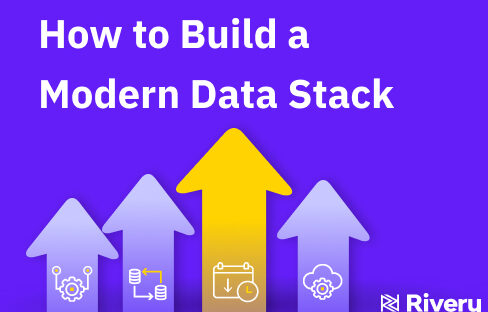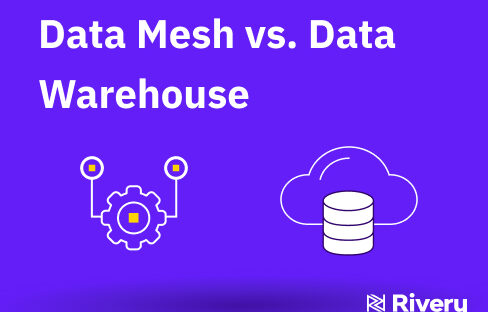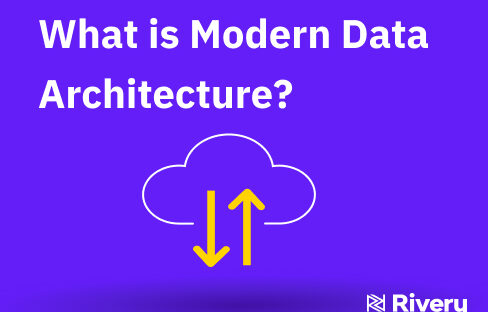At it’s core, a modern data platform is a set of data tooling typically centered around a data warehouse or data lake that lays the foundation for Data and AI led companies.
Our team put together a guide on modern data platforms and every aspect related, including modern data platform architecture and modern data platform examples.
The Main Components of a Modern Data Platform
A modern data platform consist of elements such as data ingestion, data transformation, data orchestration, governance, data storage and processing, and data visualization.
Each component plays a vital role in modern data architecture. Below we’ll discuss each of these components in more detail to understand their importance in building a robust data platform.
Data Ingestion
Data ingestion (also known as cloud data replication or extract and load), is the process of extracting data from a data source (i.e. database, SaaS application, files, etc.) and loading it into a target data lake or data warehouse. The ingestion process can be executed in batch, real-time or stream processing. Once data is ingested into your target lake or warehouse, you need to transform it to match the desired business logic and serve it to the consumption layer or directly to users.
Several data ingestion tools exist and are used, but the most popular are:
- SAAS tools – these include Stitch, Fivetran, Rivery, Hevo Data, etc.
- Open-source tools – including StreamSets, Airbyte, and Singer.
- Custom data ingestion tools – are built on orchestration engines, and a common option for this is Airflow.
Data Transformation
Data transformation refers to the process of converting data from one format or structure into another, making it suitable for analysis, reporting, or other purposes. It involves cleaning, aggregating, and manipulating raw data to extract meaningful insights. Data transformation is crucial because raw data often contains errors, inconsistencies, or is in a format unsuitable for analysis. By transforming data, organizations can make informed decisions, identify patterns, and gain valuable insights from their data.
Several techniques are employed in data transformation, including data cleaning, data normalization, data aggregation, and feature engineering. Data cleaning involves identifying and correcting errors or inconsistencies in the data. Data normalization standardizes the data to a common structure, making it easier to scale with new data. Data aggregation combines multiple data points into summary statistics, reducing the dataset’s size while preserving essential information. Feature engineering involves creating new variables or features from existing data, enhancing the dataset’s predictive power for machine learning algorithms.
One of the most popular data transformation tools out there to use is dbt. Rivery, allows you to transform your data using SQL or Python inside the platform.
Data Orchestration
Data orchestration is the process of designing, implementing, and managing workflows and data pipelines to ensure seamless integration, transformation, and analysis of data from multiple sources. It involves organizing and coordinating data-related tasks to optimize data processing and enhance overall data management efficiency.
Data orchestration is crucial for businesses because it helps streamline complex data workflows, improve data quality, enhance collaboration among teams, and enables data-driven decision-making. It ensures that data is transformed, enriched, and delivered to the right people and systems at the right time, enhancing the overall operational efficiency of an organization.
The key components of data orchestration include data integration, data transformation, workflow automation, data monitoring, error handling, and data security. These elements work together to ensure that data flows smoothly through the entire data lifecycle.
A few of the most popular data orchestration tools are: Airflow, Dagster, Mage, Prefect and Keboola. Rivery allows you to orchestrate data pipelines intuitively and eliminates infrastructure and code overhead to scale your ELT data pipelines faster. Rivery’s Orchestration provides support for branching, multi-step processes, conditional logic, loops, and other features, making it easy to design complex workflows.
Data Governance
Data governance promotes the organization’s data availability, safety, and quality using various policies, standards, and regulations. The previous processes determine the data owners, safety measures, and usage. Generally, the main aspect of data governance is bringing and maintaining safe and easily accessible high-quality data for deeper business needs.
The key elements of data governance programs include big data and digital transformation efforts. For instance, IoT technologies are a source of new data due to the increased data volume. This is one of the consequences of outdated data management practices, which is a main topic of the company’s considerations.
The goal of modern data governance programs is improving and enhancing aspects like compliance, safety, data quality, decreasing data silos, and appropriate distribution of data access. Many world-known companies use tools for their data governance, such as Ataccama ONE, Collibra Data Governance, Erwin by Quest, IBM Data Governance, and Precisely Data360 Govern.
Data Storage and Processing
Modern data platforms use data effectively and efficiently, meaning proper data storage and processing.
The Data Warehouse
Data warehouses are responsible for managing organized data with well-defined use cases.
A cloud data warehouse is a centralized repository that stores and manages large volumes of structured and semi-structured data in the cloud. Cloud data warehouses leverage cloud computing infrastructure to provide a scalable and flexible environment for data storage and analysis.
The data is typically stored across multiple servers. This distributed data warehouse cloud architecture allows for parallel processing and faster query execution, enabling organizations to handle large datasets and perform complex analytics tasks efficiently.
In a data warehouse, the data’s purpose must be determined before it goes through the transformation. Although the system isn’t as flexible as a data lake, it does allow for better organization.
The big three of cloud data warehouses are Snowflake, Google BigQuery, Amazon Redshift. Other top warehouses are Azure Synapse Analytics, Firebolt and IBM Db2 Warehouse.
The Data Lake
Yahoo made Hadoop, built on top of NoSQL, available to the Apache Software Foundation as an open-source project in January 2008. Hadoop was the foundation for the first data lakes, which were robust and meant for usage on-site. This great technology is also incredibly complicated and not easy to use. The migration of data lakes to the cloud started in 2015, greatly improving their affordability and user-friendliness.
Data lakes were first intended to gather unprocessed information without mandating schema (formats) to enable experts to derive further conclusions from diverse data sets. Lower-performing “data swamps” might arise when data lakes have trouble digesting outdated, incorrect, or irrelevant information.
Many worldwide companies use common data lake designs like Dremio, Amazon S3, BigLake, Starburst Data Lake, and Cloudera Data Platform.
The Data Lakehouse
Data lakehouse’s combine scalability, cost-effectiveness, data lake characteristics of data centers, and the ACID (atomicity, consistency, isolation, and durability) aspects of data processing and information management. ACID are the 4 pillars upon which a transaction rests.
Data lakehouse’s are useful for business intelligence and deep machine learning, and one of their best features is the metadata layers they employ. Lakehouse’s also use a novel query engine developed for high-performance SQL searches.
A great example of an AI and data lakehouse’s platform is Databricks Lakehouse. It is an excellent modification of both data lakes and data warehouses put together. On top of inexpensive cloud storage in open formats, Databricks implements data warehouse-like data structures and administration capabilities, which is great for efficient data processing and analytics.
Data Visualization
Data Visualization also known as Business Intelligence (BI), is the visual representation of data and information. Data is visualized via elements such as charts, graphs, maps, and dashboards to visualize data insights and patterns that emerge over time. Basically, it is a way to present complex data in a clear, concise and understandable manner for everyone to understand.
Some of the most popular data visualization tools are Tableau, Sigma, Power BI, Looker and Omni.
Benefits of a Modern Data Platform
A modern data platform embodies the core principles of the modern data stack while offering unified control over your data pipelines from start to finish.
- It allows companies to expand independently and autonomously.
- It helps minimize management overheads while boosting productivity, and it gives easier access to specific data, which is a big plus.
- High-quality security is needed to keep any sensitive data safe and secure.
- Enabling a company’s competitiveness through top-of-the-line systems, tools, and technologies.
- Data storage and its evaluation are carried out in a cloud-based arena.
This makes it fully efficient and beneficial for every organization using a modern data platform.
What Is Modern Data Architecture?
The main goal of modern data platform architecture is to use the most updated and modern data infrastructure for value-at-scale delivery. Its structure is composed in a way that provides more than enough storage and seamless ingestion and transformation of big data. Its inspiration comes from cloud storage, management, and processing updates.
The modern data architecture is a must for two main things:
- Systems that back up the day-to-day operations of cloud-based companies.
- Infrastructural analytical platforms that enable decision-making based on data.
Companies need modern analytic and operational systems that can provide them with reliable application constructs and processes based on the data environment. Therefore, the data architecture of modern data platforms has answers for both problems.
Why Choose Rivery for part of your Modern Data Platform?
Rivery can ingest data from any source via no-code pre-built integrations or custom connection integration. This ingestion isn’t only to bring SaaS apps, databases, or file data into a lake or warehouse but also back into business applications via Reverse ETL. From there, Rivery allows you to transform your data using SQL or Python inside the platform, or by leveraging a data transformation tool like dbt. Whether you build your transformations inside Rivery or with other solutions, Rivery helps with orchestrating data pipelines and seamlessly connects your ingestions, transformations, and even data activation into a single flow.
Minimize the firefighting. Maximize ROI on pipelines.





